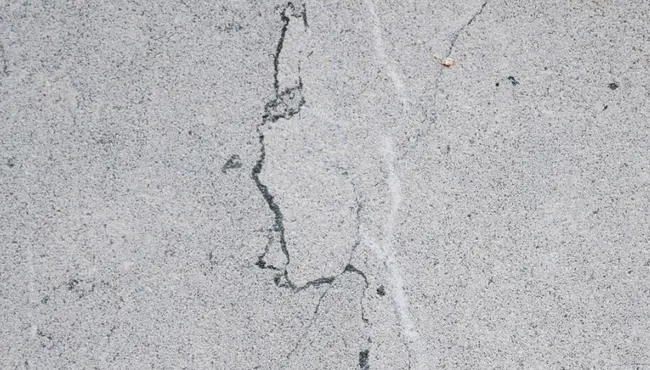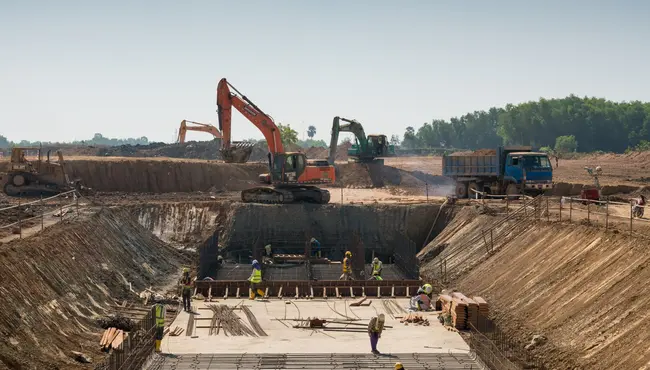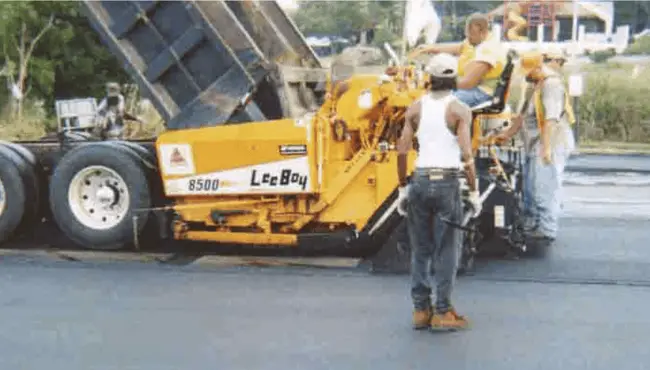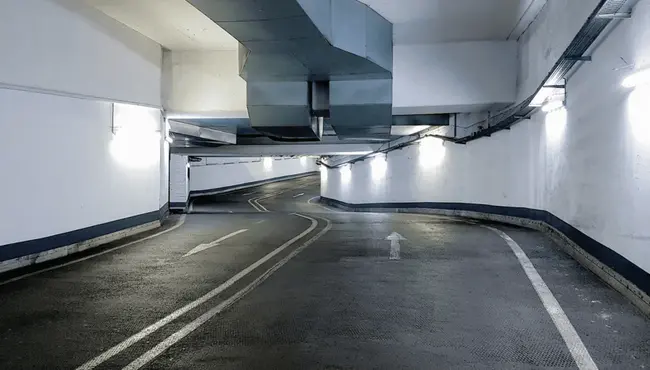At some point in time, all parking lots require pothole repair. Bowl-shaped potholes result from the localized break-up of the pavement due to several processes:
Raveling happens when the top layer of aggregate breaks free from the asphalt binder.
Segregation occurs when the aggregates break from the binder before laydown.
Alligator cracking occurs if the foundation or supporting structure can’t handle the weight of the asphalt.
Potholes can occur due to failures at joints or patches.
Water from snow, rain, or inadequate drainage can seep into the asphalt, causing it to crack and split, contributing to potholes.
During the winter-spring freeze-thaw cycle, water in the asphalt will cause potholes.
Parking lot owners can avoid the hassles and costs of parking lot repair with a few preventive steps: ensure efficient water drainage, seal cracks, keep the lot clean, and immediately repair potholes, and seal with Polyguard’s NW - 75 waterproofing membrane.
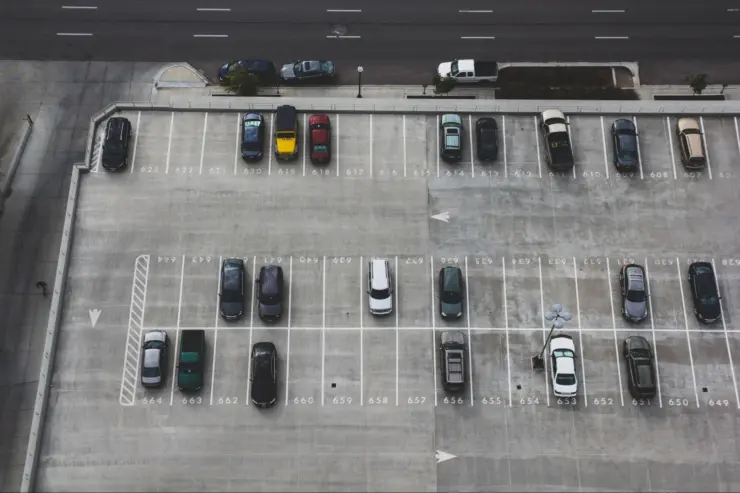
Nine Steps for Effective Parking Lot Pothole Repair
Polyguard offers this step-by-step guide for effectively repairing your parking, to avoid a time-consuming and costly lot overhaul.

Step One: Clear and Clean Your Parking Lot
Survey your parking lot from perimeter to perimeter, clearing away loose items like garbage, vegetation, crumbling asphalt, gravel, and surface dirt. Next, look for fuel, grease, leaf, and mulch stains.
You can use a broom, blower, or pressure washer to remove surface dirt, gravel, or loose items. However, If you use a pressure washer, do not use it on oil and grease stains because it will drive them deeper into the asphalt’s surface.
You can use a formulated degreaser like trisodium phosphate (TSP), bleach, or baking soda to help lift and lighten fuel and grease stains.
You can use soap or vinegar to remove most leaf and mulch stains. However, mix one capful of bleach with one gallon of water for deep, set-in stains. Apply the solution to the stain. After 30 minutes, scrub the stain.
Step Two: Prepare Pothole for Repair
To permanently repair a pothole, remove the visibly damaged material to the depth needed to reach firm support, including part of the subgrade, if necessary.
Compact the new material to square edges and create a rectangular shape, which will facilitate the compaction.
Step Three: Tack the Hole
Tack the vertical edges and the bottom of the cut-out with a thin bituminous liquid asphalt to promote bonding between HMA pavement lifts.
Step Four: Install Drainage
If the water in the pavement contributed to its failure, install drainage.
Step Five: Fill Potholes with Asphalt
Fill the pothole with dense-graded hot mix asphalt (HMA) or a cold patching mix slightly above the existing surface to allow for continued compaction due to vehicles. A low spot will hold surface water and eventually fail the repaired pothole. Also, smooth the top surface of the mix as much as possible to facilitate a smooth ride.
Compact the hole with a rubber tire roller
Potholes deeper than 6 inches require applying the mix in two layers and thoroughly compacting each layer of the new asphalt mix. Adequate compaction will prevent deforming of the new material and stop water from entering the pavement.
- For large parking lots with many potholes, spray-injection patching is a more efficient repair method. Spray-injection patching uses a specially-equipped truck with an emulsion tank, aggregate bin, and a high-volume blower with an injection head. Spray-injection patching:
Removes loose asphalt material and debris with compressed air
Blows the tack coat, aggregate, and hot emulsion into the patch
Uses forced air to compact the mix as it sprays into the patch
Step Six: Close Parking Deck
Close the parking lot for 24 hours, the approximate time needed for a hot asphalt patch to harden enough to handle the weight of a car.
Step Seven: Prepare Pothole for POLYGUARD’S NW-75
Sweep the area near the pothole of dust, dirt, or debris, which could affect the POLYGUARD NW-75’s adhesion.

With a brush or roller, apply Polyguard 650 RC Liquid Adhesive, an asphaltic solvent-based liquid adhesive primer, to the pavement around the repaired pothole, extending past where you plan to install the NW-75. The 650 RC Liquid Adhesive coats the existing surface and improves the bonding of the NW-75 and the pavement. Allow the liquid adhesive to dry to the touch.
Step Eight: Apply POLYGUARD’S NW-75
Peel and Stick Polyguard’s NW-75 waterproofing membrane can apply to newly filled potholes, forming a stable, waterproof roof, which stops water from entering the repaired area and causing failure due to asphalt stripping. Polyguard’s NW-75 also prevents ice from forming at the base of the repair, which can cause the pothole mix to pop out.
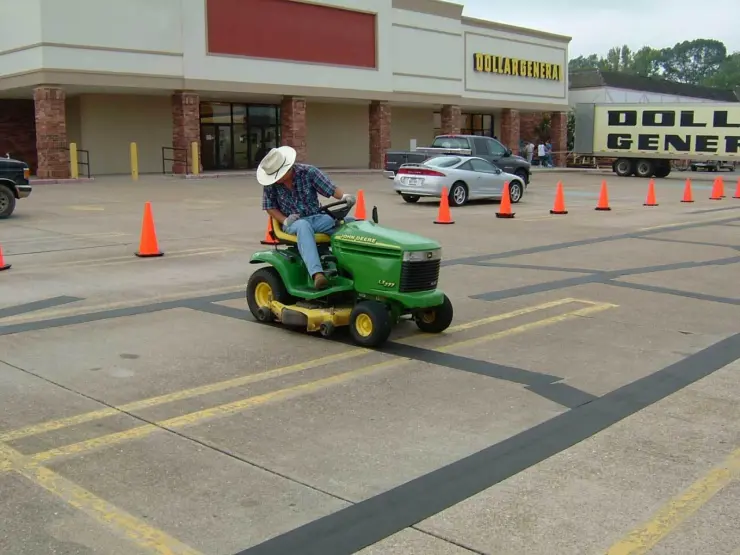
For proper adhesion of the POLYGUARD’S NW-75, only apply in temperatures of 50°F and greater, and to clean and dry adhesions. Remember that the warmer, dryer, and cleaner the pavement, the better the bond.
Using a razor blade, cut a piece of NW-75 large enough to cover the repair plus at least 6-inches beyond onto a clean, competent surface. For this application, we recommend purchasing a 48-inch roll of POLYGUARD’S NW-75.
Carefully remove the release film from the leading edge of the cut piece.
Lay the exposed adhesive side to the pavement adjacent to the filled pothole.
Continue to apply the NW-75 onto the pothole surface while releasing the protective film.
For repairs greater than 48-inches wide, overlap the NW-75. Always overlap the material, so the overlapped top edge is in the direction of traffic flow.
Roll the area with a rubber tire roller to ensure an adequate bond with the new mix and adjacent pavement.
Step Nine: Apply a Topcoat
When wet, the nonwoven geotextile top surface of NW-75 may lose surface friction.
Applying a topcoat of liquid asphalt and spreading coarse sand over the surface will solve this problem. When the asphalt cools, roll with a rubber tire roller.

Find the Best Parking Lot Pothole Repair Solutions with Polyguard’s Highway Division
For more on how to effectively repair parking lot potholes, don’t hesitate to contact our Polyguard highway division professionals today at 314-917-9349.


